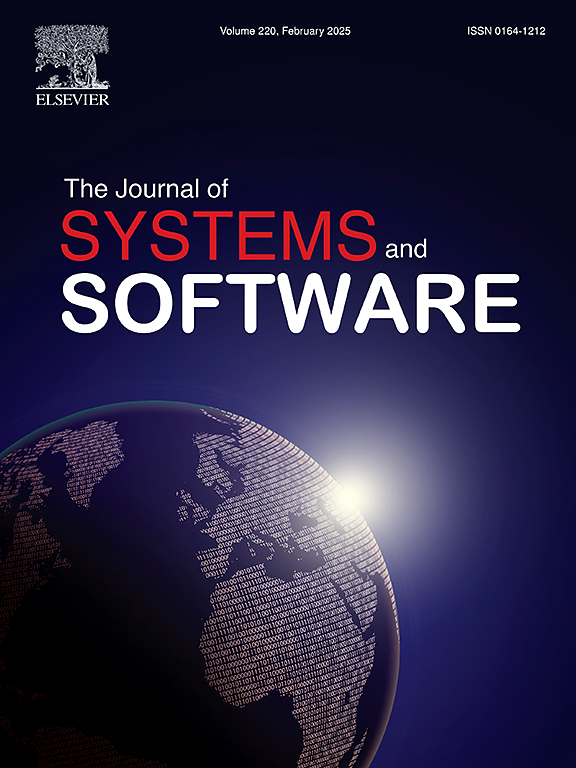Information needs in bug reports for web applications
IF 3.7
2区 计算机科学
Q1 COMPUTER SCIENCE, SOFTWARE ENGINEERING
引用次数: 0
Abstract
Given the widespread popularity and increasing reliance on long-lived web applications (such as Netflix and Facebook), effective and efficient bug reproduction is essential to maintain functionality and user satisfaction throughout the application’s lifetime. Developers use bug reports to localize, reproduce, and eventually fix software bugs. However, the content of bug reports is not always helpful (e.g., due to incomplete or missing information). In this study, we explore what type of information is often missing in bug reports and how that information is presented in them. We manually analyzed the initial and final versions of 1000 bug reports from 10 popular open-source web-based applications. The analysis revealed that, regardless of the type of software (e.g., e-commerce software or personal tools), diagnostic suggestions from developers and end-user usage information are often missing in initial bug reports but only added later throughout the lifetime of a bug report. Also, textual descriptions and screenshots are used most to describe bugs, regardless of the type of bug (e.g., a functional or performance error). The study highlighted the need for improved bug reporting templates and tools to improve bug report quality and efficiency in web application development and maintenance.
网络应用程序错误报告中的信息需求
鉴于长寿命网络应用程序(如 Netflix 和 Facebook)的广泛流行和日益依赖,有效和高效的错误重现对于在应用程序的整个生命周期内保持功能性和用户满意度至关重要。开发人员使用错误报告来定位、重现并最终修复软件错误。然而,错误报告的内容并不总是有用的(例如,由于信息不完整或缺失)。在本研究中,我们探讨了错误报告中经常缺失的信息类型以及这些信息是如何呈现的。我们人工分析了来自 10 个流行开源网络应用程序的 1000 份错误报告的初始和最终版本。分析结果表明,无论软件类型(如电子商务软件或个人工具)如何,初始错误报告中往往缺少开发人员的诊断建议和最终用户的使用信息,只有在错误报告的整个生命周期中才会添加这些信息。此外,无论错误的类型(如功能错误或性能错误)如何,文字描述和屏幕截图都是描述错误的最常用方法。这项研究强调了改进错误报告模板和工具的必要性,以提高网络应用程序开发和维护中的错误报告质量和效率。
本文章由计算机程序翻译,如有差异,请以英文原文为准。
求助全文
约1分钟内获得全文
求助全文
来源期刊

Journal of Systems and Software
工程技术-计算机:理论方法
CiteScore
8.60
自引率
5.70%
发文量
193
审稿时长
16 weeks
期刊介绍:
The Journal of Systems and Software publishes papers covering all aspects of software engineering and related hardware-software-systems issues. All articles should include a validation of the idea presented, e.g. through case studies, experiments, or systematic comparisons with other approaches already in practice. Topics of interest include, but are not limited to:
•Methods and tools for, and empirical studies on, software requirements, design, architecture, verification and validation, maintenance and evolution
•Agile, model-driven, service-oriented, open source and global software development
•Approaches for mobile, multiprocessing, real-time, distributed, cloud-based, dependable and virtualized systems
•Human factors and management concerns of software development
•Data management and big data issues of software systems
•Metrics and evaluation, data mining of software development resources
•Business and economic aspects of software development processes
The journal welcomes state-of-the-art surveys and reports of practical experience for all of these topics.
 求助内容:
求助内容: 应助结果提醒方式:
应助结果提醒方式:


